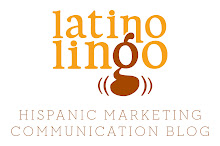In the English v. Spanish language debate, don't lose sight of what's most important: cultural relevance
On the heels of Univision reporting that it was number one for two consecutive weeks among adults 18-34 and 18-49 comes news from the Pew Hispanic Center that a growing share of Latino adults are consuming news in English from television, print, radio and internet outlets, and a declining share are doing so in Spanish.
Naturally, many marketers are going debate whether they should try to connect with Latinos in English or Spanish. Many advertisers might feel relief that they can run their general market campaigns and not have to worry about a Spanish-language one.
So what language should you select? The answer is both. However, what shouldn't be lost in the discussion is the issue of cultural relevance. That is above and beyond language selection. While English-language ads may REACH Latinos, they won't necessarily CONNECT with them if the message is not relevant to them.
Marketing in general is cultural, even within the same ethnic and racial group. Don't think so? Doesn't a White teenage girl differ culturally from her White grandfather? Of course. So, brands develop specific and tailored messages to reach either the teenage girl or her grandfather because they understand that what motivates them to consume a product or service is often shaped by their beliefs, experiences, interpersonal orientation among other factors.
Why then do many want to take a short cut and assume their English-language campaigns will connect with Hispanics -- or worse, translate their ads to reach Hispanics in Spanish? There are no short cuts.
As Latinos continue their rapid population and purchasing power growth, understand that campaigns must be developed with them in mind from the start. Otherwise, you're stuck trying to fit a round peg into a square hole.
Naturally, many marketers are going debate whether they should try to connect with Latinos in English or Spanish. Many advertisers might feel relief that they can run their general market campaigns and not have to worry about a Spanish-language one.
So what language should you select? The answer is both. However, what shouldn't be lost in the discussion is the issue of cultural relevance. That is above and beyond language selection. While English-language ads may REACH Latinos, they won't necessarily CONNECT with them if the message is not relevant to them.
Marketing in general is cultural, even within the same ethnic and racial group. Don't think so? Doesn't a White teenage girl differ culturally from her White grandfather? Of course. So, brands develop specific and tailored messages to reach either the teenage girl or her grandfather because they understand that what motivates them to consume a product or service is often shaped by their beliefs, experiences, interpersonal orientation among other factors.
Why then do many want to take a short cut and assume their English-language campaigns will connect with Hispanics -- or worse, translate their ads to reach Hispanics in Spanish? There are no short cuts.
As Latinos continue their rapid population and purchasing power growth, understand that campaigns must be developed with them in mind from the start. Otherwise, you're stuck trying to fit a round peg into a square hole.
Labels: Hispanic advertising, Hispanic communication, Hispanic marketing, Hispanic population growth, Hispanic purchasing power, Latino Cultural Identity, transcreation


